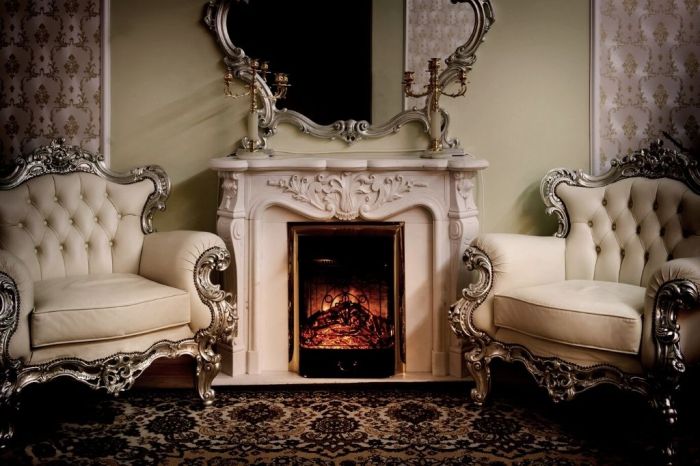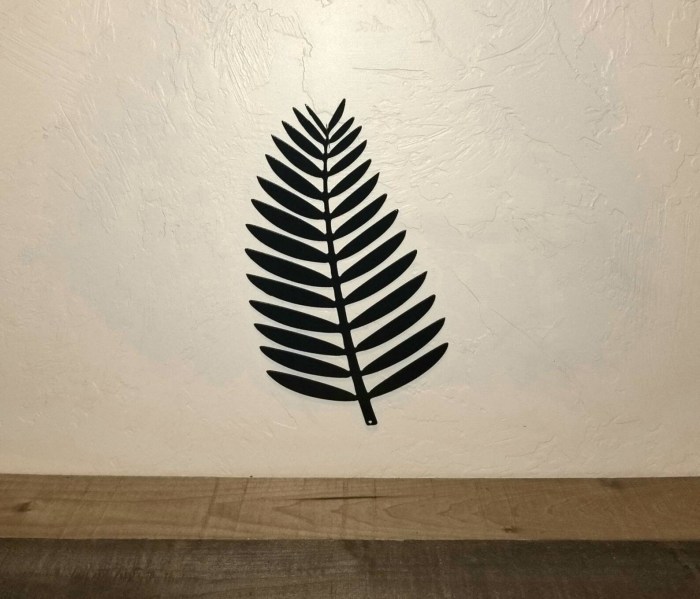Defining Victorian Gothic Style in Wall Decor

Victorian Gothic wall decor, a prominent style of the Victorian era (1837-1901), blends the grandeur and ornate detailing of Victorian design with the darker, more dramatic elements of Gothic Revival architecture. This fusion resulted in a unique aesthetic characterized by its rich textures, intricate patterns, and evocative atmosphere. It’s important to understand these core elements to appreciate the style’s distinct character in wall decoration.Victorian Gothic wall decor is defined by a complex interplay of several key characteristics.
These elements work together to create a space that feels both opulent and slightly mysterious, reflecting the era’s fascination with both the past and the dramatic.
Key Characteristics of Victorian Gothic Wall Decor
The defining features of Victorian Gothic wall decor include the use of dark, rich colors; intricate, often asymmetrical, patterns; and the incorporation of natural motifs such as foliage, flowers, and animals, frequently depicted in a stylized manner. Materials like dark wood, heavy fabrics, and richly textured wallpapers play a crucial role in achieving the desired ambiance. The overall effect is one of depth and complexity, inviting closer inspection and appreciation of the minute details.
This contrasts sharply with simpler styles that prioritize clean lines and minimalism.
Common Motifs and Patterns in Victorian Gothic Wall Art and Design
Victorian Gothic wall art and design frequently employ specific motifs and patterns. These recurring elements reinforce the style’s overall aesthetic. Intricate floral patterns, often incorporating roses, ivy, and other climbing plants, are common. These are frequently intertwined with architectural elements like arches and pointed windows, further emphasizing the Gothic influence. Grotesques, mythical creatures, and scenes from literature and mythology also frequently appear, adding a touch of the macabre and romantic.
These images are often rendered in a highly detailed and stylized manner, emphasizing the craftsmanship involved. The use of repeating patterns, whether geometric or floral, creates a sense of rhythm and visual interest.
Comparison with Other Similar Styles
Victorian Gothic wall decor shares some similarities with other styles, but possesses unique characteristics that set it apart. While it shares the ornate detailing of Victorian styles in general, it differs in its emphasis on darker colors and Gothic-inspired motifs. Compared to the Rococo style, which is lighter and more playful, Victorian Gothic is significantly more dramatic and intense.
The use of pointed arches and other architectural elements distinguishes it from the simpler lines of Neoclassical styles. The incorporation of macabre imagery, while present in some Romantic styles, is more pronounced and integrated into the overall design in Victorian Gothic.
Victorian Gothic wall decor, with its morbid elegance and theatrical darkness, often reflects a societal obsession with death and decay. This aesthetic, however, finds a curious parallel in the broader market of vintage wall art decor , where similar themes of nostalgia and faded grandeur are commodified and repackaged for contemporary consumption. Ultimately, both styles reveal a fascination with the past, albeit expressed through vastly different levels of overt symbolism and social critique.
The enduring appeal of Victorian Gothic, therefore, speaks volumes about our ongoing engagement with history’s darker impulses.
Color Palettes in Victorian Gothic Wall Decor
The color palettes employed in Victorian Gothic wall decor contribute significantly to its overall atmosphere. Deep, saturated colors like deep reds, emerald greens, rich browns, and dark purples are prevalent. These are often complemented by accents of gold or metallics, adding to the sense of opulence. Black is frequently used as a grounding color, enhancing the dramatic effect of the other hues.
The overall effect is a rich, complex palette that creates a sense of depth and mystery, perfectly complementing the intricate patterns and motifs.
Materials and Techniques in Victorian Gothic Wall Decor

Victorian Gothic wall decor, a testament to the era’s aesthetic sensibilities, employed a diverse range of materials and sophisticated techniques to achieve its characteristic dramatic and opulent effects. The materials used reflected both the readily available resources of the time and the burgeoning industrial capabilities, resulting in a unique blend of handcrafted artistry and mass-produced elements.
Materials Used in Victorian Gothic Wall Decor
The creation of Victorian Gothic wall decor involved a variety of materials, each contributing to the overall aesthetic. Wood, in various forms, played a significant role, from intricately carved panels and moldings to the frames of mirrors and paintings. Plaster, often richly textured and detailed, formed the basis of many decorative elements, including cornices, friezes, and even three-dimensional wall sculptures.
Metal, particularly cast iron and wrought iron, added strength and a sense of solidity, often seen in decorative brackets, fireplace surrounds, and even elaborate wall sconces. Finally, fabrics like velvet, damask, and tapestry were used to upholster furniture and create wall hangings, adding layers of texture and color to the overall design.
Craftsmanship and Techniques in Victorian Gothic Wall Decor
The craftsmanship evident in Victorian Gothic wall decor was highly skilled and meticulous. Carving, whether in wood or plaster, demanded considerable expertise, with intricate patterns and details often requiring weeks or even months to complete. Gilding, the application of gold leaf to highlight decorative elements, was a painstaking process, requiring a steady hand and specialized techniques. The creation of textured surfaces, through the use of plasterwork or the application of specialized paints, added depth and visual interest.
Painters employed a range of techniques, including layering, glazing, and dry brushing, to achieve rich, multi-dimensional effects.
Impact of Industrialization on Materials and Techniques, Victorian gothic wall decor
Industrialization significantly impacted both the materials and techniques used in Victorian Gothic wall decor. Mass production techniques allowed for the wider availability and affordability of materials like cast iron and machine-made moldings, making elaborate designs accessible to a broader range of consumers. The development of new pigments and paints also expanded the palette of colors available to artists and decorators.
However, while industrialization facilitated greater production, it didn’t entirely replace handcrafted elements; many pieces still incorporated a significant degree of hand-finishing and detailing.
Common Decorative Techniques in Victorian Gothic Wall Art
The distinctive look of Victorian Gothic wall decor was achieved through a combination of decorative techniques. These techniques, often used in conjunction with one another, contributed to the richness and complexity of the overall aesthetic.
| Technique | Description | Materials | Examples |
|---|---|---|---|
| Stenciling | Applying paint or other materials through a cut-out template to create repeating patterns. | Paint, wallpaper paste, fabric dyes | Repeating floral patterns on wallpaper, borders, or friezes. |
| Painting | Applying paint to surfaces to create images, patterns, or textures. | Oil paints, watercolors, tempera paints | Murals depicting gothic scenes, landscapes, or heraldic motifs. |
| Gilding | Applying gold leaf or other metallic leaf to surfaces for decorative effect. | Gold leaf, silver leaf, other metallic foils, adhesive | Highlighting moldings, frames, or decorative elements. |
| Wood Carving | Sculpting designs into wood surfaces. | Various hardwoods, carving tools | Intricate paneling, decorative moldings, and furniture detailing. |
General Inquiries: Victorian Gothic Wall Decor
What is the difference between Victorian Gothic and other Gothic styles?
While sharing some similarities, Victorian Gothic distinguishes itself through its opulent details, richer color palettes (often incorporating jewel tones), and a more ornate and less austere aesthetic compared to earlier Gothic styles.
Where can I find Victorian Gothic wall decor?
Antique shops, online marketplaces (like Etsy), and specialized home decor stores often carry Victorian Gothic-inspired pieces. You can also commission custom pieces from artisans.
How can I incorporate Victorian Gothic into a small space?
Choose smaller-scale pieces, such as a single ornate mirror or a small tapestry, and use darker colors sparingly to avoid overwhelming the space. Focus on strategic placement to maximize impact.
What are some modern alternatives to traditional Victorian Gothic materials?
Modern materials like faux finishes (for wood or plaster), resin, and high-quality prints can replicate the look of traditional materials while offering greater durability and accessibility.


